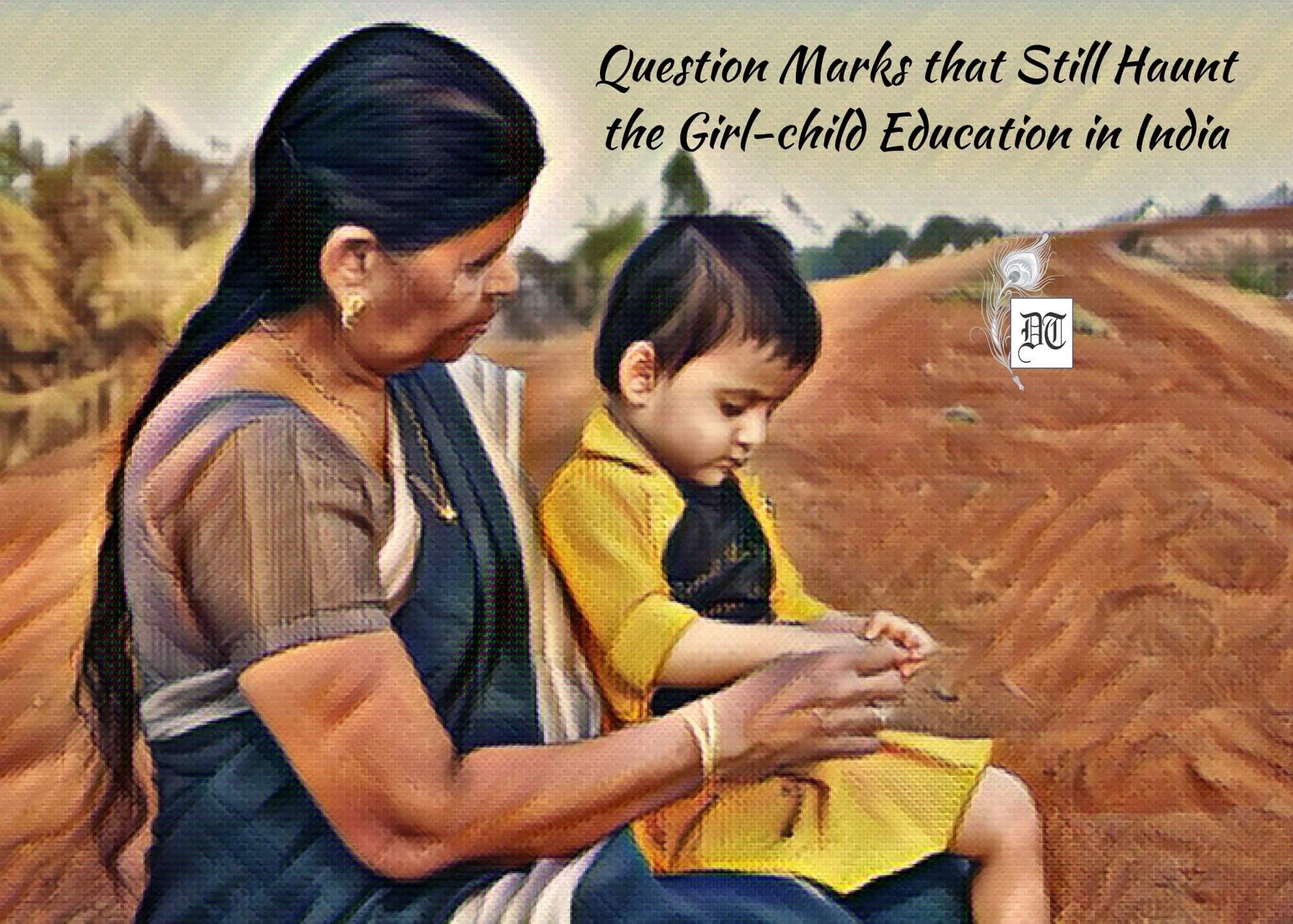Many girls are enrolled in schools but they never reach the classroom. Sehar details the reasons for low percentage of the girl-child education, which stops them from empowerment, for Different Truths.
“Education is the most powerful weapon which you can use to change the world.” ~ Nelson Mandela
Whenever we think of the girl-child education in India, all we are reminded of are the discrepancies in statistics and the problems faced by girls in attaining basic education. The month of March has a day which gives every woman across the globe a reason to celebrate womanhood in a big way. Well, I guess, being a woman is a celebration in itself, but we wouldn’t mind if we get a chance to celebrate ‘womanhood’ in a grand manner.
If we look at history, the scenario of girl-child education in India has changed considerably. Empowering the women of the country with education and financial independence was a major preoccupation of the government machinery. But till date our nation is trying to push the statistics of literate women in our country a little up with every passing year.
Statistics and More
As per the Census report of 2001, the literacy rate recorded was 54 per cent amongst women. Along with sincere efforts made by both the state machinery and NGOs, the government also passed the 86th Constitutional Amendment, in the year 2002, making education from age 6-14 the Fundamental Right of every Indian child.
But as per the recent reports on the status girl-child education across the world, India ranks low in global indices. According to a report cum blog paper released by the New York-based International Commission on Financing Global Education Opportunity in the month of October 2016:
The proportion of women who completed five years of primary schooling in India and were literate was 48 per cent, much less than 92 per cent in Nepal, 74 per cent in Pakistan and 54 per cent in Bangladesh.
According to Justin Sandefur, one of the authors of the paper, “This is a simple but powerful signal that India’s education system is under-performing.”
In a recent effort to look into the issues of girl-child education in India, the Union HRD Ministry has constituted a sub-committee of Central Advisory Board of Education (CABE) under the Chairmanship of Telangana’s Deputy Chief Minister.
The Social Barriers
We belong to a nation where social norms have a strong hold on our lives and behaviour as well. Girl-child education in India has faced the brunt of stringent social norms during its initial phase. The government schemes like Sarva Shikha Abhyan, midday meals, etc. did manage to pull some students into classrooms. But the affect of these plans was short lived. Today, our country is planning to create smart cities but doesn’t the question of their viability arise in our minds? With a population that consists of men and women, who still dream of electricity and clean drinking water, will the concept of smart city be accepted?
According to the data made available by Demographic and Health Surveys (DHS) – India ranks 38th among the 51 developing countries, if countries are assessed by the earliest grade at which at least half of the women are literate. Ghana is placed at the bottom.
Our nation has not yet reached the benchmark of 100% literacy and to ensure a brighter future, our policies should concentrate on making smart people by providing them with education and not just literacy.
Many Girls are enrolled in Schools but Never Reach the Classroom
There is not one but quite a number of reasons behind this phenomenon. Girls in villages are married off at an early age, they look after their younger sibling, while their mother cooks or is giving birth to another one. Even the safety of girls is one major reason why often girls in villages and districts leave school as soon as they hit puberty or even before that. According to a statistic published by UNICEF in 2005-Only 70% of girls between the age of 6 and 10 attend primary school as against 76% boys in the same age group.
Though in recent times, the status of gender disparity in schools has largely been addressed as the enrolment of girls in higher education increased from 39 per cent, in 2007, to 46 per cent, in 2014.
According to a study done by UNESCO the reason behind this increase in enrolment of adolescent girls was the building of single-sex toilets in schools
However, the grim side of the reports brings to light the wide gap that remains persistent in achieving basic skills such as reading and math, where there has been a decline in learning outcomes Till date the percentage of girls who get to attend school in India continues to remain low in comparison to that of boys their age. The situation is a lot worse at the upper primary level where only 40% of girls attend school. The main factors influencing this disparity include poverty and the continuing hold of social and cultural beliefs that discriminate against girls. A workshop was held by UNICEF in Delhi during the year 2005 in which girls from seven different states of India, demanded for equal access to education. These girls had attended school even after facing strong opposition from families.
Now let’s analyse the situation almost a decade later, in an article published by The Guardian in the year 2013, there were examples of girls hailing from the lower strata of society who faced problems every day while commuting to school. A girl from Madanpur Khadar, South Delhi was banned from going to school after her family found out that she was being eve teased by some street urchins. Was she responsible for their behaviour? Why was she denied the right to education? What was her fault?
Students going to government schools face a lot of problems which range from overcrowded classrooms, absent teachers and unsanitary conditions. The dearth of primary school teachers has been a problem that government is still tackling. According to a 2010 report by the National Council for Teacher Education an estimate of 1.2 million teachers were needed to fulfil the RTE (Right to Education) Act requirements. Further, the RTE Forum also reported that 21% of teachers recruited weren’t professionally trained.
But as time passes there are innumerable examples of mothers hailing from financially weak socio-economic backgrounds who have taken a vow to educate their child. Domestic helps, maids, nannies serving in houses are now hell-bent in providing not just literacy to their children but education. They dream of seeing their children as doctors, engineers, teachers, holding government jobs and having a secure future. It is this change in the thought process of Indians on the whole that will make the nation prosper and also have a brighter future.
Brigham Young aptly said, “You educate a man; you educate a man. You educate a woman; you educate a generation.”
Picture design Anumita Roy, Different Truths






 By
By
 By
By
 By
By